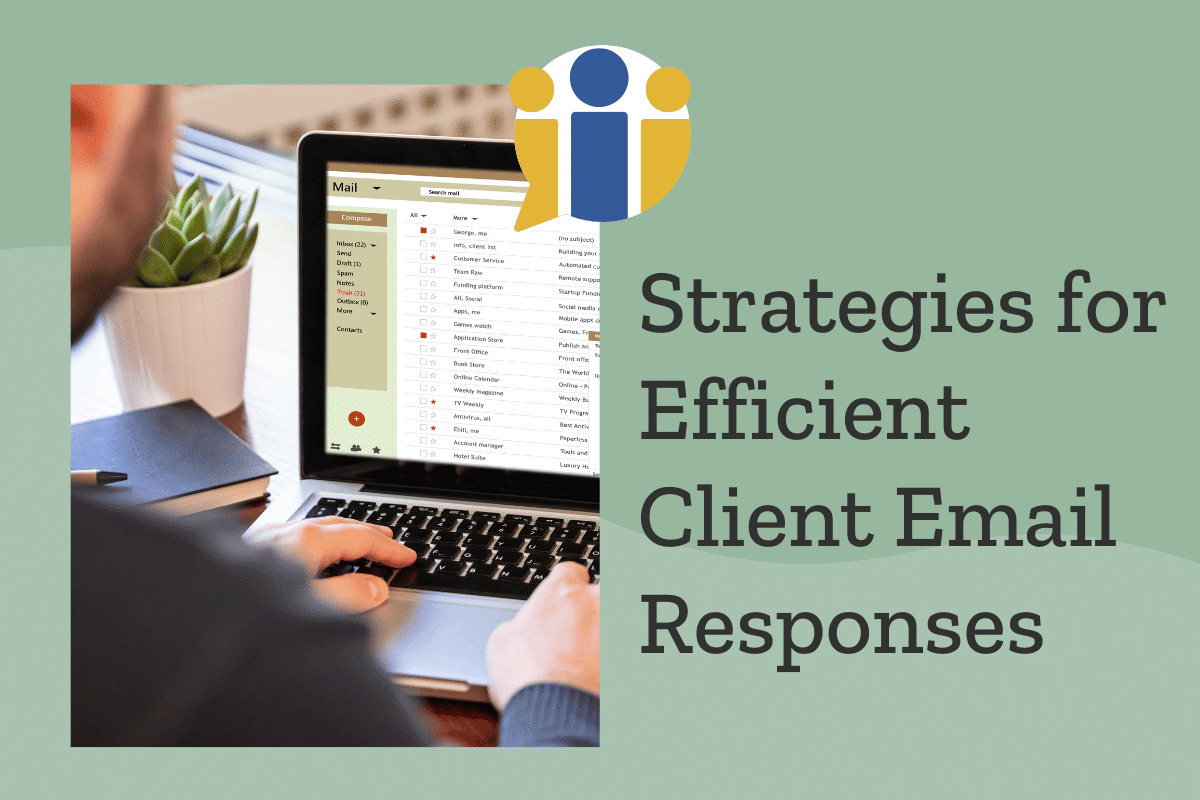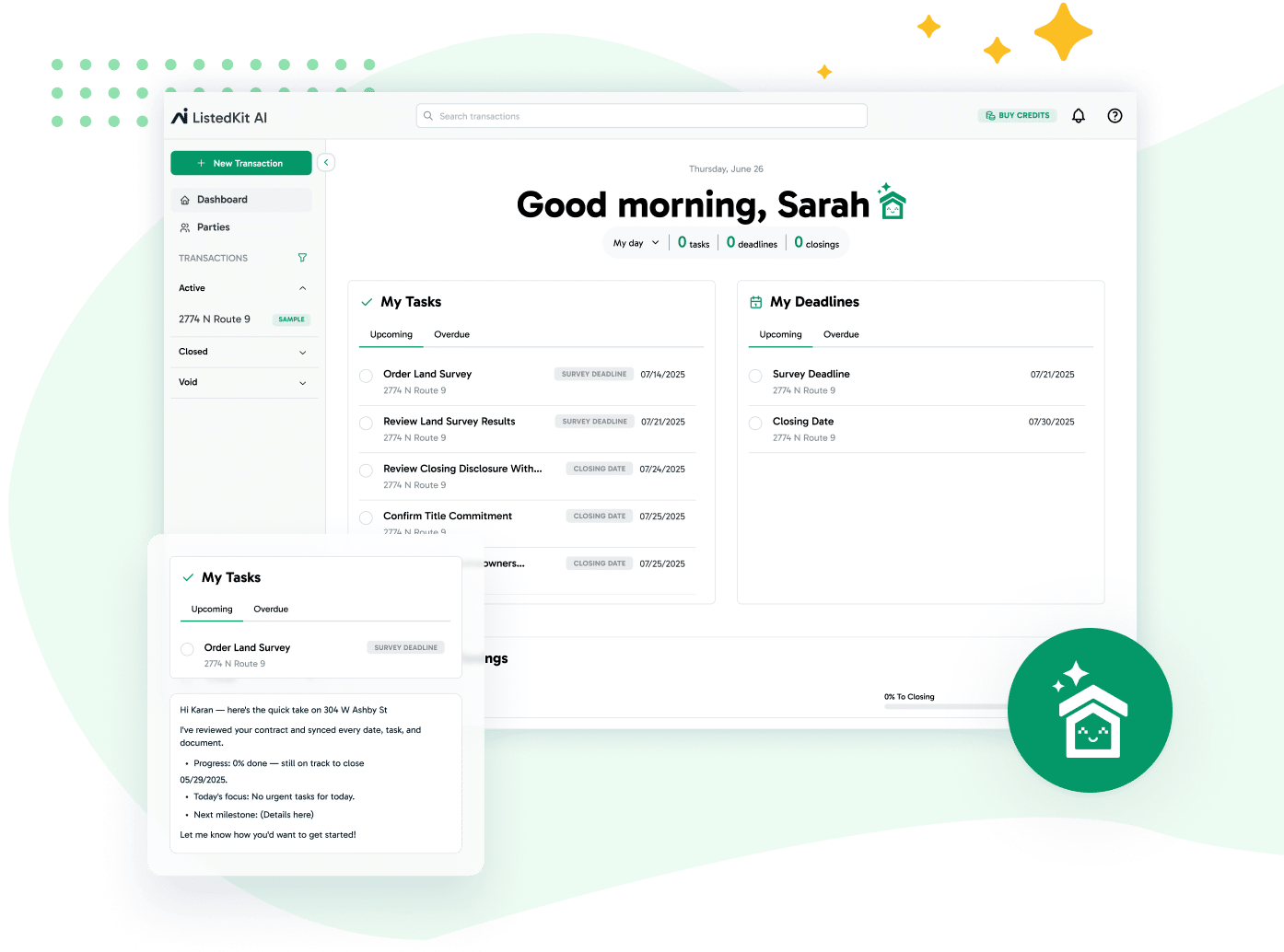Growing your real estate business means juggling more client communications. While marketing automation tools can help, success hinges on smart strategies. Effective email management doesn’t just streamline your workflow—it strengthens your relationships with agents. Let’s explore practical tactics for efficient, professional client responses that’ll elevate your game. In this article, we’ll discuss practical strategies for efficient and professional client responses so you can rock your job.
Understanding the Role of Email in Real Estate Transactions
Email is key to clarity and efficiency in real estate transactions. Agents use email to schedule viewings, manage client interactions and track the buying process so everyone is informed and on the same page.
As a transaction coordinator, you need to make sure all communication is prompt and easy to understand.
Timely emails are key to building trust with agents who rely on you to keep their clients informed. Whether it’s a confirmation email or a quick update on the buying process, prompt and clear communication keeps the client interested and happy.
Practical Strategies For Efficient Client Email Responses
1. Use Pre-Designed Templates
Having pre-designed email templates can save you time and ensure consistency with your clients. By using these templates, you can save time, avoid errors, and look professional. Instead of writing each email from scratch, you can just select a template and customize it as needed.
What’s great about them is that they can be used for various scenarios—welcome emails to new clients of real estate agents, follow-up after a viewing, and updates on the closing process.
Moreover, templates reduce errors. Standardizing your emails means you’re less likely to forget important details. This consistency builds your credibility and trust with potential clients.
For real estate professionals who don’t want to design their own templates, real estate marketing automation tools can be a lifesaver. ListedKit has Smart Templates you can use to send marketing emails and never miss a task with automated reminders.
Examples of Templates to Have
Real estate email templates come in many forms. But here are some of the must-haves:
- New Client Welcome Email: Introduces services and sets expectations at the start of the transaction.
- Email Newsletters: Keeps clients informed of market updates, new listings and other relevant information.
- Property Viewing Confirmation: Confirms viewing details so everyone is informed and prepared.
- Meeting Confirmation: Provides details of scheduled meetings so agendas and attendance can be organized.
- Document Request Email: Streamlines document collection and clarifies requirements and deadlines.
- Market Update Email: Keeps clients informed of market trends to help with decision-making.
- Offer Submission Confirmation: Confirms offer submission details and outlines the next steps.
- Contract Review and Signing Instructions: Guides clients through contract understanding and signing.
- Closing Reminder: Make sure clients are ready to close with all necessary documents and information.
- Post-Closing Follow-Up: Thanks to clients and provides access to post-transaction documents.
- Client Satisfaction Survey: Collects feedback to improve services and maintain client relationships.
2. Time Your Communications
Timing your communications means your emails hit your clients at the right time. This is especially important for follow-up emails and automated campaigns. Optin Monster says the best time to send emails is Tuesday and Thursday, 9 a.m.- 11 a.m. There are also some engagement spikes in the early afternoon and evening. However, weekends are not as effective for email campaigns.
While these are general guidelines, you need to tailor your email schedule to your specific audience to get the most out of your email marketing. Here are some tips to help you find the best schedule for your communications:
- Know Your Audience’s Schedule: Knowing when your clients check their emails helps you decide when to send messages. Experiment with different times and days to see what works for your audience.
- Use Email Sequences: Automated email sequences or drip campaigns keep clients engaged over time. Start with a welcome email, then a series of emails with valuable content such as neighborhood guides or property updates.
- Be Consistent. Regular follow-up emails keep clients engaged. Use email workflows to automate these tasks so no lead falls through the cracks.
- Use Email Reminders: Email reminders for key dates and follow-ups keep clients informed and manage expectations, which is crucial during property transactions.
- Review and Adjust: Constantly review your email campaign metrics to see what works. Adjust your strategy based on open rates and client engagement.
If you need help with timing your emails and communication, ListedKit has got you covered. With its scheduling feature, you can automate email send times to increase client engagement.
ListedKit also lets you set up email workflows so routine communications are automated. This way, your clients are informed and engaged without you having to monitor them constantly, freeing up your time for more strategic activities.
3. Personalize Automated Replies
Customizing templates based on buyer personas and customer journey maps can deliver more relevant communication.
Here are some other benefits of this real estate email marketing strategy.
- Better Customer Experience: Personalized emails show you understand and value your clients’ specific needs. Clients respond more positively when communication is relevant to them.
- More Client Engagement: Customized emails with targeted content and insights keep clients engaged through the transaction process, nurture relationships, and ensure no important updates are missed.
- Stronger Relationships: Consistent and meaningful communication, tailored to each agent’s unique concerns and interests, shows you are attentive and proactive and strengthens the bond with your clients.
- Higher Client Satisfaction: Personalized experiences make agents feel more confident during the transaction process, increase satisfaction and loyalty, and promote long-term collaboration.
To personalize your automated email templates, start with audience segmentation. This means categorizing your target audience based on demographics, past interactions and client preferences.
Next, focus on the subject line. This should be tailored to the recipient’s interests or recent activity. For example, including the agent’s name or property they are associated with can grab their attention.
Include personalized content in the body of the email. Use data such as the client’s name, recent transactions or upcoming meetings to create a connection. For example, mentioning recent properties they viewed or discussing market trends relevant to their interests can make the email feel more tailored and considerate.
Using a customer journey map means your emails are aligned with where the client is in the transaction process. This targeted approach means more relevant communication more meaningful interactions and stronger relationships.
4. Streamline Information Gathering
Information gathering in real estate transactions is critical. It means all documents and details are collected on time, with no delays, and a smooth transaction process. When you gather information efficiently you can quickly identify what’s missing and address it straight away, reducing the risk of misunderstandings or issues later in the transaction.
This saves time and the overall experience for clients and agents as they know all the steps are being handled efficiently and professionally.
To simplify this process, use email marketing software and automation tools to save time and reduce manual work so you can focus on more strategic activities.
For example, ListedKit has built-in email automation where you can choose templates and send them at key points of the transaction.
This simplifies the process and reduces repetitive tasks. You can set up automated emails to request documents, schedule appointments, or follow up on outstanding tasks. Having these automated emails as part of your daily tasks means you will never miss important information.
Besides, the ability of templates to integrate with CRM software to manage your client interactions is also good.
Customer Relationship Management (CRM) software is critical for gathering information. A cloud-based CRM means you can manage all client interactions in one place. A good CRM can do data entry, track communication history, and set reminders for follow-ups with agents.
Tools like these allow you to see all critical information at a glance, organize client data and run your business better. By automating data collection and centralizing information, CRM software reduces the complexity of managing multiple transactions and makes your business smoother.
5. Monitor and Adjust Email Marketing Efforts Based on Feedback
To make your real estate marketing automation work, you need to monitor key metrics and adjust them based on feedback. This means real estate professionals can improve their email campaigns to better support their clients and build stronger relationships.
Using the right tools and tracking key metrics means you can see how well your email campaigns are performing. Tools like ListedKit’s email automation allow you to:
- Email Deliverability: How many emails are delivered to your email list.
- Click-Through Rates (CTR): How many people click links in your email.
- Bounce Rates: Which emails are not being delivered? This could be an issue with your email list or server.
- Conversion Rates: How many people are taking the desired action, e.g. visiting a landing page or responding to a call to action.
- Unsubscribe Rates: How many people are opting out of your email.
These metrics will tell you which campaigns are working and where you need to improve.
Based on the data, you can adjust your email templates and schedules for better results. For example if you see low click through rates you may need to modify the email content, add more links or update old content. To improve conversion rates you may need to refine your call to actions or optimize landing page elements.
For example, updating the email link structure or changing the send time can result in better engagement. Tools like ListedKit allow real estate professionals to choose and update templates and adjust schedules based on what works best for their clients, e.g. Eaton Realty.
Adjusting based on feedback means your future campaigns will be better and more tailored to your clients. This continuous improvement will also improve your performance and strengthen your relationship with real estate agents, ultimately leading to better client satisfaction and retention.
More Tips for Better Client Email Responses
Besides what I mentioned above, here are some more tips to help you respond to client emails more efficiently:
- Prioritize Emails: Sort and prioritize emails by urgency and importance. So critical communications are dealt with first, and less urgent matters are handled accordingly.
- Use Clear and Concise Subject Lines: Good subject lines help the recipient understand what the email is about. Clear and concise subjects increase the chance of the email being opened and read.
- Update Contact Information: Keep your email list up to date so your communications reach the right people and prevent bounce rates and miscommunication.
- Track Email Interactions: Use tracking tools to see who is opening your emails and which links are being clicked. This will help you understand what your clients are interested in and tailor your future communications better.
- Set up Auto-Responses for Frequently Asked Questions: Auto-responders can handle common questions, provide instant answers and save time on repetitive questions. This means your clients get the information they need quickly, and your inbox stays manageable.
Conclusion
As a real estate transaction coordinator, you need to have effective strategies in place to respond better to client emails.
Using pre-designed email marketing templates keeps things consistent and professional, and scheduling ensures emails are sent at the right time. Personalizing auto-responders helps build relationships, and gathering information quickly speeds up transactions. Adjusting based on feedback means continuous improvement.
Implementing these will give you clear, timely and relevant communication, which is key to client satisfaction and trust.
Real estate software like ListedKit has features like email automation, templates and scheduling to help you implement these strategies and streamline your workflow. By using ListedKit you’ll be more efficient, professional and ultimately more client retention and satisfaction.




